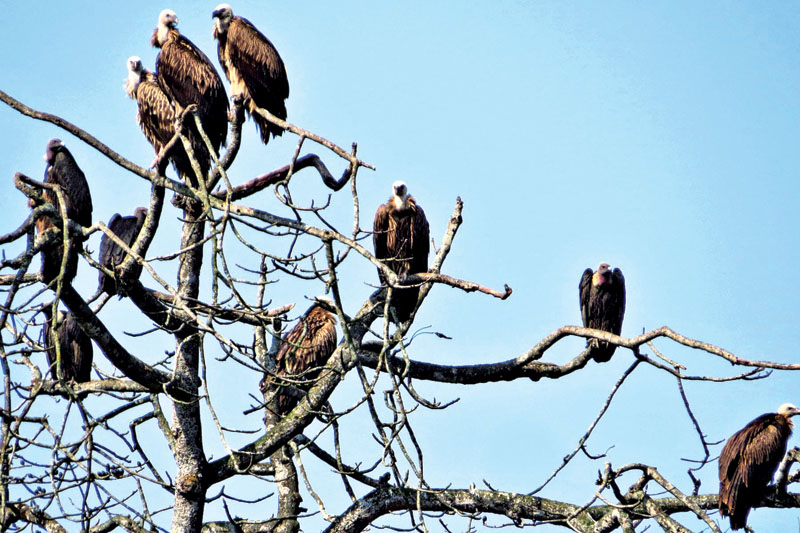Vultures pushed to verge of extinction
The endangered vultures that roam the north-eastern skies of Jajarkot have been pushed to the verge of extinction.
The major reason for decline in their population has been shown to be the veterinary drug diclofenac, which is widely used to treat livestock. Vultures are exposed to diclofenac by feeding on livestock carcasses which contain residues of this drug.
Although the government of Nepal put ban on production, import and use of veterinary diclofenac in June 2006 and endorsed Vulture Conservation Action Plan for Nepal (2009-13) in 2009 use of the drug continues unabated in the rural areas due to lack of awareness.
Vulture Conservation Action Plan for Nepal is a part of the greater effort of the government to conserve and consolidate the conservation initiatives for all vulture species.
A team from Bird Conservation Nepal led by Krishna Bhusal on April 14, 2013 had paid visits to these VDCs and counted the vultures after placing a carcass of a buffalo for them to eat.
During the count, the team came across 36 Himalayan, two Hadey , one white-rumped and two golden vultures.
BCN member, Govinda Bahadur Singh, said the nest of Hadey and White-rumped vultures were not found during the search. Just two months ago seven dead vultures were spotted at different locations of
the villages of Jajarkot. Deforestation and wildfires in the forests have led to further decline in the population of endangered vultures.






